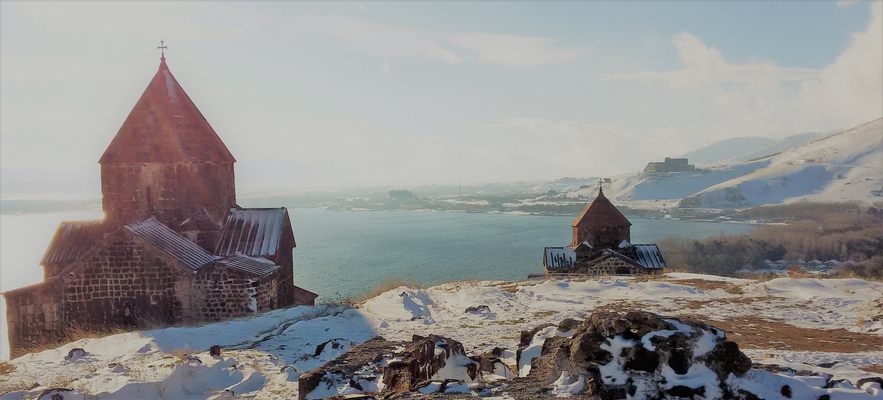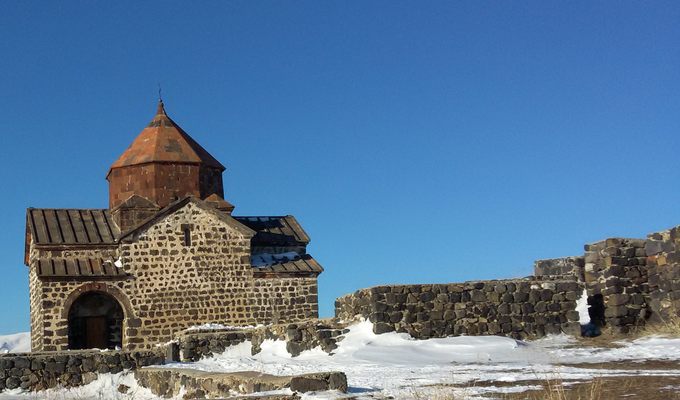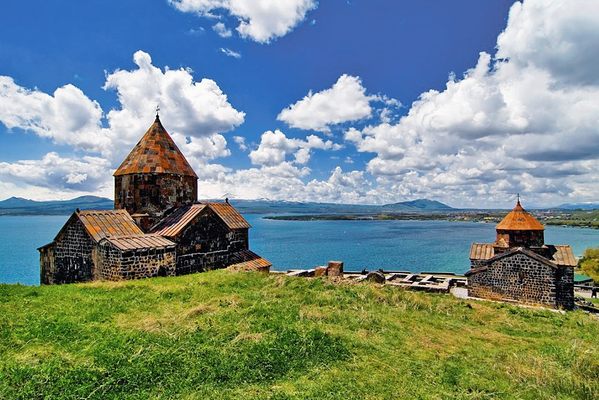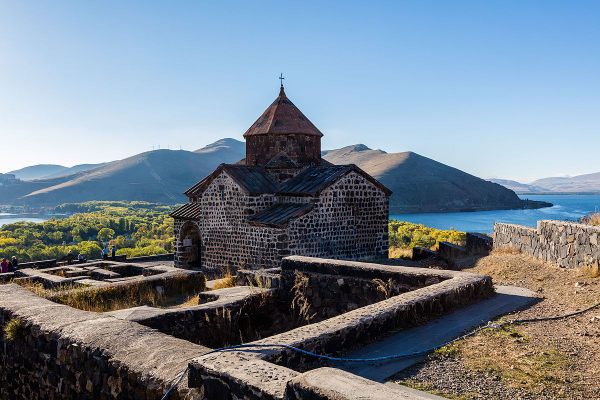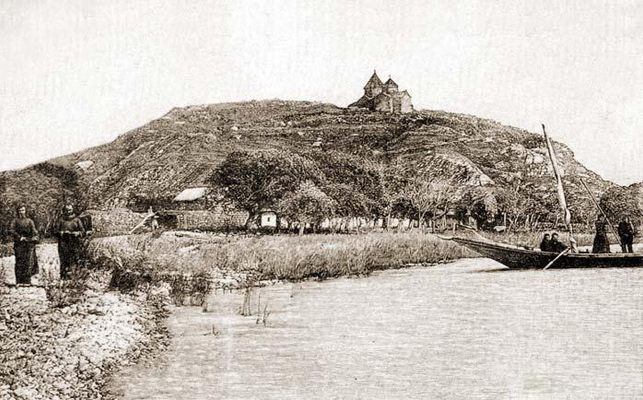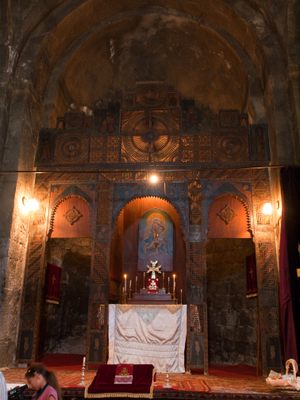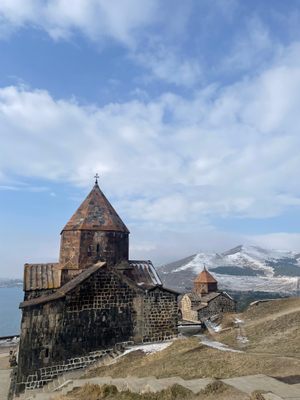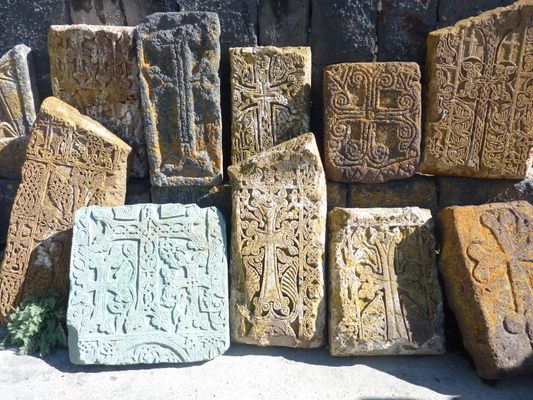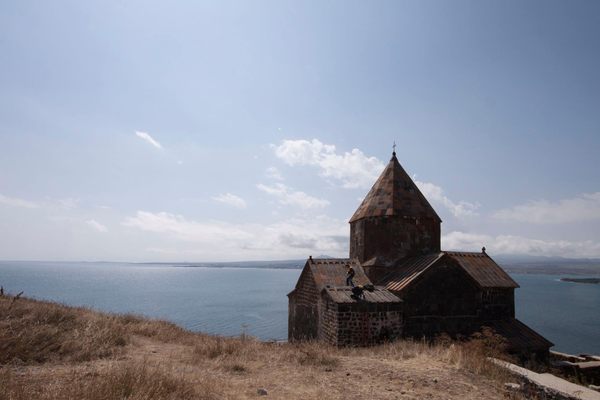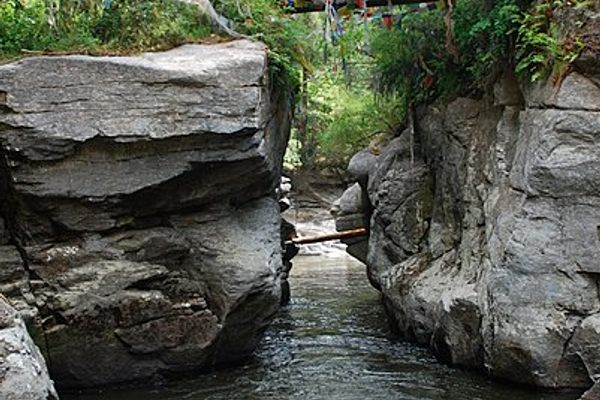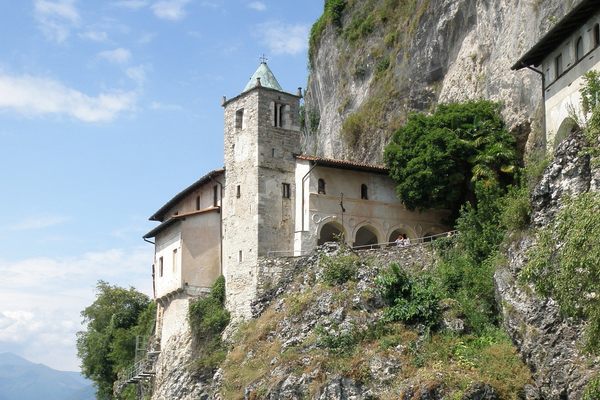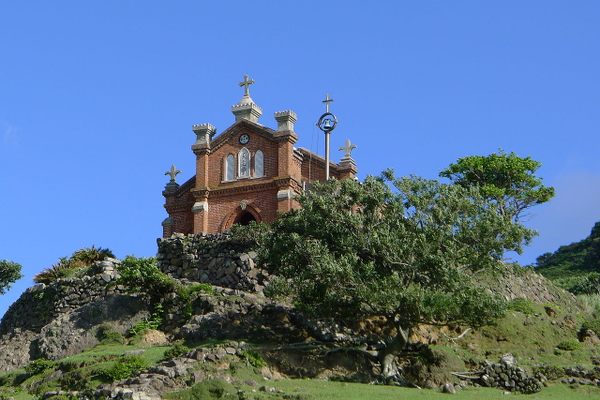About
The monastery complex of Sevanavank is surrounded by such arresting natural beauty it’s no wonder there are two local legends attached to it. The black-and-orange stone construction of the churches is offset by the ornate orange and green andesite and limestone khachkars, stone blocks with intricate designs carved into them. The sparkling azure lake creates a breathtaking backdrop.
The complex dates back to the 4th century CE. Soon after St. Gregory the Illuminator converted the King of Armenia to Christianity in 301, he established two churches on an island in Lake Sevan. St. Harutiun’s church, which now lays in ruins, was a domed basilica with three naves, a popular Armenian design. St. Karapet’s, with a similar design, is still standing. In the 9th century, Princess Mariam of the Bagratumi dynasty established St. Arakelots church, the church of the apostles, and St. Astvatsatsin’s church on the island, as well as expanding and rebuilding the existing complex.
According to legend, Princess Mariam embarked on a mission to build 30 churches in honor of her late husband after his untimely death. She chose the location of Lake Sevan after she had a dream where the 12 apostles flew across the lake and showed her where she should build.
Local legend also tells of how Lake Sevan got its name. Ashot II, also known as Ashot Yerkat or “Ashot the Iron,” camped on the island while fighting off Arab invaders in the 10th century. Despite local monks and fishermen joining his forces, the Armenian army was far outnumbered by the Arabs. A local fisherman advised that their best chance was to sail across the lake and attack at dawn, with the rising sun at their backs. The Arabs were blinded by the sun and the Armenians won the battle. The uniforms and blood of the fallen soldiers turned the lake black, giving it its name, “Sev,” the Armenian word for “black.”
In the 1800s the monastery complex was used as a rehabilitation center for misbehaving monks. French explorer Jean-Marie Chopin reported in the 1830s that the monks endured a strict discipline regimen including a diet without meat or wine. No women or youth were allowed on the island. A later visitor noted that the monks copied bibles by hand. No mention is made if they were allowed to participate in the water sports that make the area such a popular tourist attraction today.
The island became a peninsula during the industrialization of the 1930s when 65 feet of water was drained from the lake. The monastery was abandoned during the Soviet era and restored in the 1990s as a historic monument. The peninsula now features the Armenian writer’s residence and the Armenian president’s summer palace. Although it hasn't been an island for about 80 years now, Armenians still call it kghzi, or island.
Related Tags
Know Before You Go
The monastery is easily accessible by train or car, and located only 45-minute drive north of the capital, Yerevan. The buildings were restored in the 1990s and are now open to the public. Several private travel companies also offer tours to the monastery.
Community Contributors
Added By
Edited By
Published
August 31, 2018
